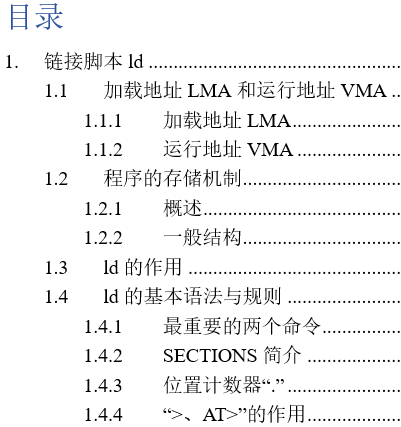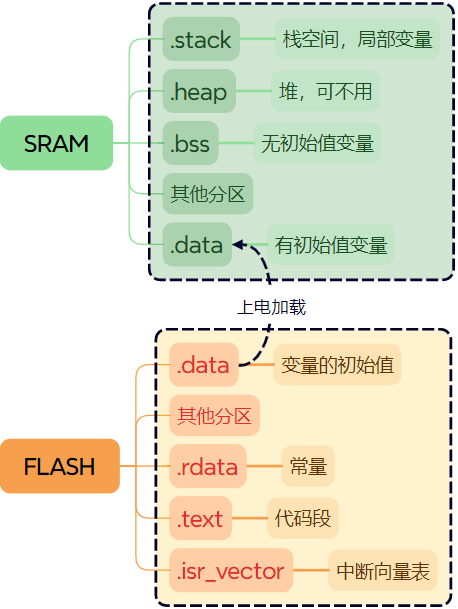
1. Linker Script Ld
1.1 Load Address LMA and Run Address VMA
1.1.1 Load Address LMA
-
When programming, the addresses where the code segment and data segment are stored are generally in FLASH. -
This storage address ensures that data is not lost when power is off.
1.1.2 Run Address VMA
-
During software execution, the (virtual) addresses of the code segment and data segment can be in FLASH or SRAM. -
If VMA is in SRAM, it needs to load from LMA, that is, copy from FLASH to SRAM, such as .data.
1.2 Program Storage Mechanism
1.2.1 Overview

1.2.2 General Structure
-
Regular code is placed in FLASH, and variables are in SRAM. Upon powering on, data is loaded from LMA to VMA.
-
Similarly, other contents of FLASH can also be defined in SRAM, loaded from FLASH to SRAM upon powering on.

1.3 Role of Ld
-
Specifying the program entry point, i.e., where to start executing the program.
-
Defining memory layout, including allocation layout for code segment, data segment, heap, and stack.

1.4 Basic Syntax and Rules of Ld
1.4.1 The Two Most Important Commands
-
MEMORY: Memory Command -
SECTIONS: Segment Command

1.4.2 Introduction to SECTIONS
Allocates code segment, data segment, heap, and stack. A linker script can contain multiple SECTIONS commands, although it is relatively rare to use this way:

1.4.3 Location Counter “.”
-
Points to the current address of the current memory, continuously increasing. -
Can be assigned a value, such as: -
【. += 0x10000;】 -
【. = 0x10000;】 -
Can retrieve the current address: 【_sdata = .;】

1.4.4 The Role of “> and AT>
-
> corresponds to the run area -
AT> corresponds to the load area

— END —